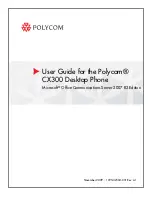
remote nodes), FLX sends STUN binding requests as part of the
media connectivity tests. When a candidate is nominated for use, a
STUN binding request is sent with a flag indicating that the
candidate pair is nominated. There are two nomination methods that
can be used:
Regular
– For Regular Nomination, FLX validates candidate pairs
with initial STUN binding requests, and then selects a valid
candidate pair by sending another STUN binding request with a flag
indicating that the pair is nominated.
Aggressive
– For Aggressive Nomination, FLX doesn’t wait to set
the nominated flag in a second STUN binding request, but rather
sets the flag in the STUN binding requests for all of the candidate
pairs. The ICE processing completes when the first pair successfully
passes connectivity checks. The aggressive method is faster but
does not always result in the optimal path being selected. This is the
default method.
Maximum
number of ICE
host candidates
An ICE host candidate is an actual local transport address in the
host. Host transport addresses are obtained by binding to attached
network interfaces. These interfaces include both physical interfaces
and virtual interfaces such as VPN. This option specifies the
maximum number of local ICE host candidates that may be used in
evaluating candidate pairs when determining the best route. The
default value is -1 or an empty field, which indicates that there is no
maximum.
Disable RTCP
component in
ICE
Select this option to disable the RTCP component in ICE. The
option is unchecked by default.
Enable TURN
relay with ICE
Select this option to enable the use of a TURN (Traversal Using
Relay NAT) relay when using ICE. A TURN relay is a media relay
server residing on the public internet which can relay media data
packet between clients. TURN relays are used when other preferred
mechanisms are not available, such as STUN or direct connectivity.
The option is unchecked by default. If TURN is enabled, the TURN
settings below (server, username and password) must also be
specified.
TURN Server
Specify the TURN server domain name or hostname. The format is
either "DOMAIN:PORT" or "HOST:PORT"
TURN Username Specify the username to authenticate against the TURN server.
TURN Password
Specify the password to authenticate against the TURN server.
Use TCP
connection to
TURN server
Use TCP to communicate with the TURN server rather than UDP.
This option is unchecked by default.
QoS
Enable QoS
Select this option to enable QoS (Quality of Service) tagging for SIP
and media. For layer 3, at the Internet layer, the DiffServ
(Differentiated Services) precedence level is Class 3. The
67
















































